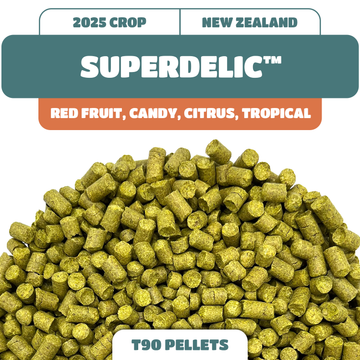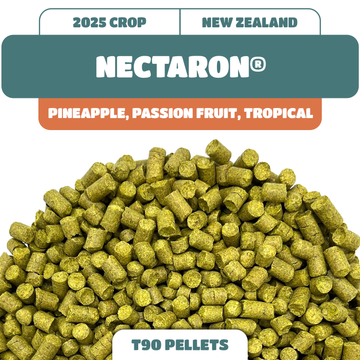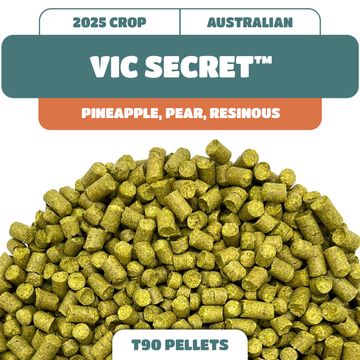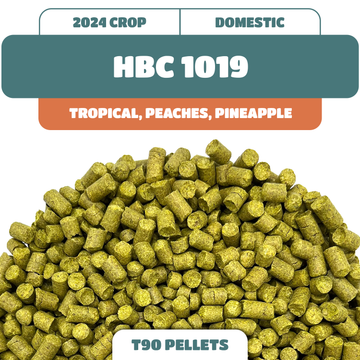What Are Hops Good For?
Those who grow hops or homebrewers who find extras on hand might wonder what else is there to do with hops besides making beer. Fortunately, there are many different potential uses for hops exclusive of brewing with beer. Fresh, dried, and even pellet hops have a variety of uses in addition to the beer-making process. When used correctly, hops are helpful to items including teas, baker's yeast, decorations, garden additions, soap, sauces, and dressings.
While the hop plant has a long history within the beer brewing community, people have been using this unique plant for many surprising uses over the years. Brewers value hops for adding bitterness, aroma, and flavor to beer. These characteristics also provide a unique twist in traditional food and beverage recipes. Also, their ability to help relieve anxiety and insomnia means hops also can be used for nighttime beverages, soaps, or lotions.
If you are a novice at working with hops, these plants are generally green and spiky. Hops are described in a variety of ways ranging from "grassy" to "citrus" to "peach or pear" or "piney." Unfortunately, they vary in bitterness. One quick rule of thumb: Less is more. The bitterness increases with heat and baking time, so hop muffins are probably not in high demand. But a mild-flavored variety would work well.
While hops are best known for providing bitterness and flavor in beer, they have probably been used to make teas for almost as long. People have added hops to tea because certain compounds make them naturally relaxing. Hops are a common but little-known element in bedtime teas or other drinks meant to help calm a person and help them fall asleep. As a result, hop-based teas are growing in popularity. A unique 'Teamaker' strain was released in 2008 by the ARS Forage, Seed, and Cereal Research Unit. This particular strain of hops had lower amounts of highly bitter alpha acids and higher levels of beta acids. Combined with the spicy, floral aroma and flavor, 'Teamaker' makes for better tea than many highly bitter strains traditionally used for brewing.
People can be allergic to almost anything in the kitchen, including the baker's yeast used to make bread. Fortunately, those with yeast allergies can benefit from making a simple hop yeast at home. This yeast replaces traditional baker's yeast in almost every bread recipe. Even if you don't have an allergy, those wondering what to do with hops can try a batch of this bread out to see if you like it.
Eat young hop sprouts like you would asparagus. Any serious gardener knows asparagus can be challenging to grow because you can't consume it until it's the third season in the garden. This alone makes asparagus more expensive than other vegetables. Hops are also known as the 'poor man's asparagus' because you can cut young hop shoots and use them just like you would asparagus. That means hops can be sauteed, steamed, or even fried hop shoots as a unique new side dish at the dinner table.
Hops are a welcome addition when making hot-processed soap. It is possible to use various hops to make quality homemade soap. However, to succeed, this requires you to make hot-processed soap instead of a cold-processed version because the hop aroma comes from the oils within the hop plant. In cold-processed soaps, the soaps are missing that aroma.
Hops can shift tastes from sweet to savory. As long as you account for the bitterness, hops can make a welcome addition to salad dressings and many traditional sauces, especially to balance out sweeter flavors. Rather than adding hops directly into a dressing, you could make a simple vinaigrette by using hop-infused vinegar as your vinegar addition. To make it, add popular whole hops such as Cascade or Centennial to a small bottle of cider vinegar and let macerate for about a week.
Simmer hops flowers in stews or sprinkle them on savory dishes. If you have whole hops on hand, it will be easy to find a few traditional dishes that could be pleasantly surprising from this new flavor. First, pull a few petals from the hop flower and add them to a soup, stew, or chili, similar to when a recipe calls for a bay leaf. The petals will provide some bitterness along with their unique aroma and flavor, so be careful to balance it out with other ingredients. Next, grind up some hops outside of the cooking process and sprinkle them directly onto dishes such as cauliflower mash or pizza like you would oregano or basil. Just be careful not to add too much, or it can quickly overwhelm the other flavors!
Hops are also recognized for having calming properties that can often help people relax and fall asleep more easily. A 'hops pillow' will bring that calming sensation straight into bed with you. A dream pillow is reminiscent of a sachet. Place the dry crushed herbs into a fine muslin bag, and then place it flush inside a pillowcase on top of the regular pillow. The fragrance will flow through the pillowcase. This dream pillow will provide a pleasing aroma to comfort you all night.
Use hops as ornamental floral decorations in the home or outdoors.
Hops are a beautiful bine that will grow 20 feet long. Use this beauty by taking the plant down, drying it, and using it as an outdoor decoration over an opening or eating area. These are easy to plant in your garden to add extra shade and coverage. Since hops are a bine plant, they will climb up surfaces and reach lengths of up to 20 feet. If you have an ugly fence or unsightly wall in your backyard or garden area, then the hop plants are perfect for covering it over and creating a more natural look in your space. With a bit of effort and patience, hop plants can be trained to travel in specific directions, and multiple plants will provide both beauty and coverage!













